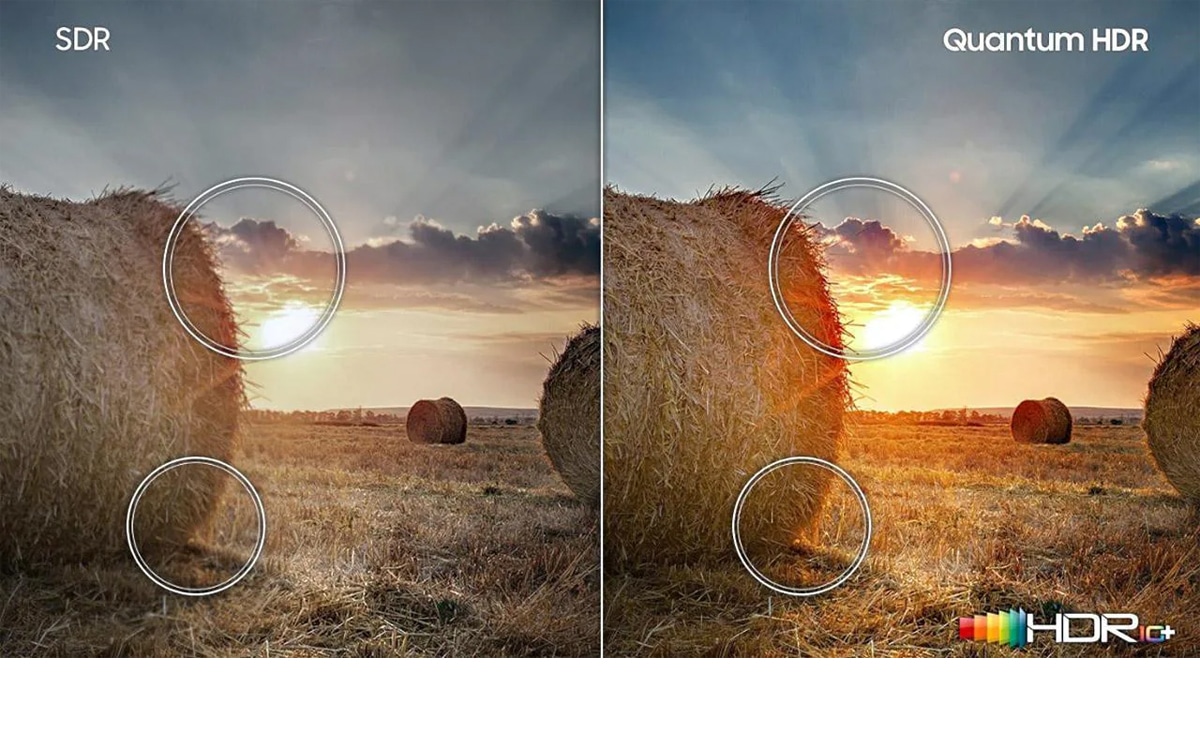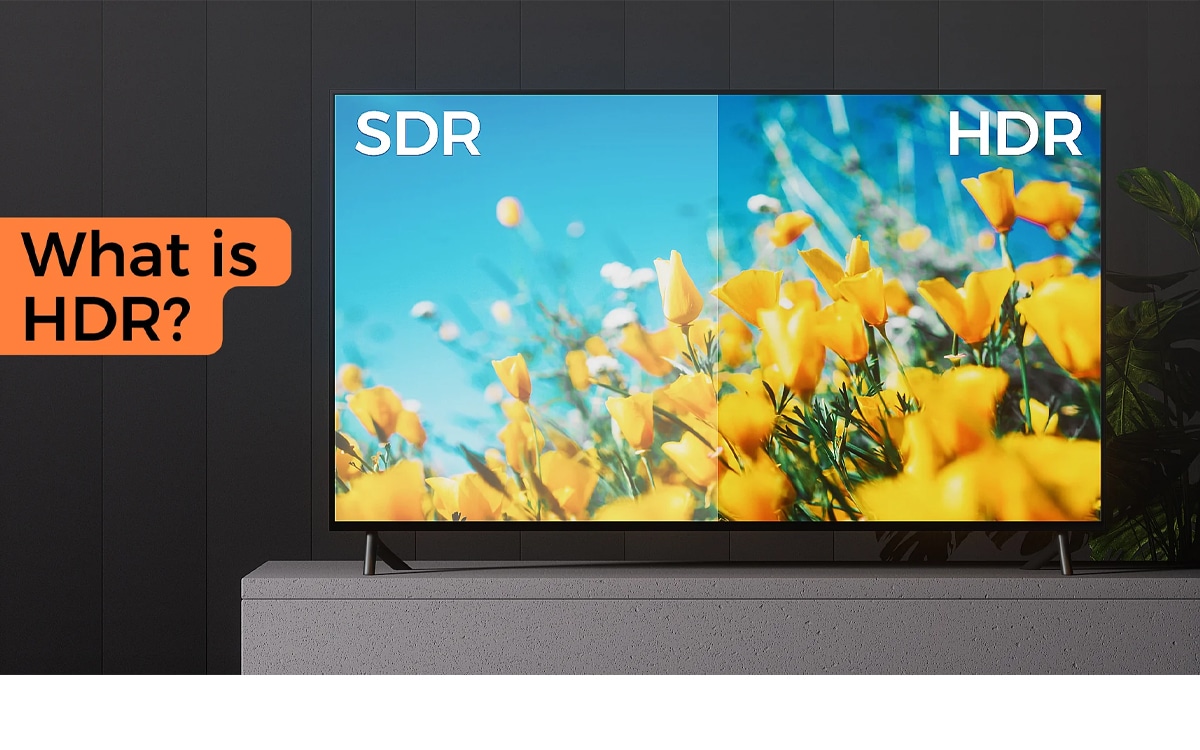Of the many terms thrown about with reckless abandon in the tech industry is “HDR”. What does HDR actually stand for? What does it refer to, and why should you care? If you want to start making sense of all of the jargon thrown about in the world of TVs, then you’ll want to keep reading below.
In this article, we are going to finally find out once and for all what HDR is, and why it matters!
What Is HDR?
Put simply, HDR refers to advancements in TV display technology that have helped to improve overall fidelity and clarity. HDR stands for “High dynamic range”, and refers to an increased range of available colours for a display to make use of when displaying images.
HDR images feature far greater detail than SDR images. This is thanks to featuring greater highlights, and much clearer contrast in specific images.
As well as allowing access to a wider array of colours, HDR also allows TVs to access much greater levels of brightness. This allows images to pop off of the screen more effectively.
However, HDR specifically refers to a video format. In order to actually take advantage of the format’s benefits, you will need to ensure that you have an HDR-compatible TV.
How Does HDR Work?
Because HDR is actually a specific video format, it operates by sending specific signals to compatible displays with instructions for how to display the image. HDR images or videos will send out a signal to a compatible TV, which is then decoded. This allows the TV to access a greater range of colours and brightnesses.
HDR is a video format that sends a signal to a compatible HDR TV, allowing the screen access to a much wider gamut of colours to improve visual clarity. It looks great alongside a higher resolution.
Part of what makes HDR so special is that it is able to dynamically adjust itself throughout the length of a piece of content. This allows the TV to automatically adjust its colour range and brightness depending on what a specific type of content needs.
Let’s say you were watching a blockbuster film that features scenes at different times of day. During daytime scenes, HDR would send a signal to the TV to increase the brightness, and the richness of the colours. During nighttime scenes, HDR will send out a signal for the TV to reduce its brightness.
This allows darker scenes in shows and films to be much clearer. The lowered brightness allows for much greater contrast, and far greater black values. This makes it easier to make out individual shapes in even the darkest of scenes.
What Is The Difference Between HDR And HDR10+?
When hunting around for TVs, many people often find themselves confused when they encounter both the terms “HDR” and “HDR10+”. HDR 10+ is simply an improved version of the standard HDR technology, found in Samsung 4K TVs specifically.
HDR 10+ is able to create truly significant contrast and clarity within images, thanks to highly increased brightness, to make images pop far more than they would on a standard HDR screen.
The major difference between these two HDR technologies is the fact that HDR10+ is how much brightness they are able to deliver. The brightness of any screen is measured in “Nits”, but not the kind you might find in hair! A standard HDR TV can produce around 1,000 nits of brightness, while an HDR 10+ TV can produce up to around 4,000 total nits of brightness.

Why Does HDR Matter?
If you are someone who takes visual fidelity very seriously, then HDR can be incredibly important. HDR helps to improve the number of available colours and brightness levels for a TV to recreate an image. This makes HDR an absolutely essential technology for anyone planning on using a TV to enjoy the best films and TV box sets.
The increased colour gamut and contrast also make HDR TVs some of the best TVs for gamers. Navigating through horror games is made much easier with HDR, as it makes it much easier to make out individual shapes in even the darkest areas.
HDR TVs are also able to easily recreate true black values, which makes horror games all the more creepy and unsettling to play.
And of course, increased contrast is also great for online gamers seeking to dominate the competition. The greater number of available colours makes it easier to identify other players and act accordingly!
Frequently Asked Questions
Is HDR Better Than 4K?
It’s not easy to claim that HDR is definitely better than 4K, because of the fact that the two can actually be used together to create much greater visual fidelity. 4K HDR TVs not only have greater pixel counts, but are also able to access greater numbers of colours, and better control light levels to help 4K images look better than ever.
Should I Use HDR On My Tv?
Definitely. HDR helps to significantly improve visual quality by introducing more available colours, helping images to pop more than ever before. HDR technology is also able to actively adjust brightness as needed in specific scenes, making it easy to enjoy the brightest and darkest scenes in films, without having to touch a button!
Is HDR Good For Your Eyes?
While it has long since been debunked that TVs can cause permanent vision loss, it has been proven that increased brightness can lead to greater cases of eye strain. HDR is naturally able to increase the brightness of a TV, which could lead to it causing eye strain! If you are prone to eye strain, try to use HDR settings sparingly.
How Can I Protect My Eyes When Watching TV?
One of the best ways to protect your eyes from eye strain is to sit at a suitable distance from the screen. The further away from a screen you are, the less eye strain you will suffer. It can also be beneficial to lower the brightness of your TV, to reduce glare against your eyes. You should also ensure the viewing angle is suitable, keeping your eye muscles from tiring.





